
views
Choosing Products and Ingredients

Obtain a degree or college diploma in cosmetology to gain an understanding of the industry. While further education isn't strictly necessary, it will give you a basic understanding of makeup product lines. You'll learn about ingredients and application, both of which are important when starting your own line. Look for a degrees at local community colleges or vo-tech schools, which are cheaper than traditional 4-year colleges and often offer more flexibility.

Choose the attributes you want to base your brand on. The attributes of your line are what define it and set it apart from other lines. For instance, maybe you want to focus on natural, organic products, or maybe your goal is to produce a high-end luxury line. Alternatively, maybe you want really vivid colors or very smooth, inexpensive makeup.

Build a brand around what's missing in the marketplace. If you want to stand out, bring something new to the marketplace. Think about what you wish you could find in makeup but can't. Try building your line around that. Talk to people you know, as well as cosmetologists. Find out what they want or need in a cosmetic product. For instance, maybe there are colors missing in the natural products you love or maybe you want inexpensive makeup that stays on your face all day.

Study cosmetic products to pick ingredients for your line. Spend time researching common ingredients. Look at what they do for a product, as well as whether they're common allergens. Decide what kinds of ingredients you'd prefer in your products. Look at products you love to see what kinds of ingredients they have. Check the back of the package and the company's website for ingredients. That can give you a starting point, as you can look up more about each ingredient you find. Check into alternative, natural ingredients, too, to see if they're better for your brand.

Learn the Food and Drug Administration's (FDA's) regulations. The FDA regulates items like cosmetics, so study them before you start your business. It may affect what ingredients you choose, for instance. You can find the FDA's regulations on cosmetics at https://www.fda.gov/cosmetics/. It's divided into topical sections, so you can find what you need by clicking on the appropriate link. For instance, you may also be required to list all or some ingredients on the label. Check back regularly, as FDA regulations will change over time.
Finding a Lab and Distributor

Research cosmetic labs online to create a completely new product. To start a cosmetic line, you'll need to work with a cosmetic lab. Look for ones that value what you value. For instance, if being made in the U.S. is important to you, look for ones that are based there. Also, check to see if there are reviews on the company. You could search "cosmetic labs in the United States." Take a look at their webpage to see what they have to say about themselves. If you find one interesting, call or email them to find out more about them. You could say, "I'm interested in starting my own cosmetic line, and I'd like to know more about your company. Can I ask you a few questions?" You could ask things like, "What are your company's values? Is all of your production done in the United States? How do you ensure a quality product? What type of ingredients do you use? Do you have the capability to produce an all-natural line of products?" Ask if they can make what you want happen. For instance, if you want very pigmented makeup, ask questions about that.

Work with a distributor instead of a lab for an easier process. Basically, they'll find what you need, and put your label on it for you. You'll need to do the same type of research on distributors that you would on labs. Make sure you're doing your due diligence by evaluating the distributor online, checking out their policies and ethical stances, and looking at reviews to see what other people think. Ask where the company produces their products, as it can be almost anywhere. If you prefer products from the United States, work with a company that gets all or most of their products from manufacturers there.

Ask for samples from the companies you're evaluating. Most labs and distributors are willing to send you samples. If they are, you can see what kinds of products they offer, which can give you an idea about whether you want to work with them or not.

Visit labs and distributors to decide which one is the best fit. Once you've narrowed down the labs you like to a couple of companies, set up a tour with them. Most companies are more than willing to show you around, particularly if you're a potential client. Once you've seen them, pick the one that seems to fit your brand best. If you can't visit in person, ask if they're willing to take you on a tour through video chat. For instance, you could use Skype or Apple Facetime to chat to an employee, who will show you the company through the video chat. Dig deeper with your questions while you're there. Get to know as much as possible about the company!
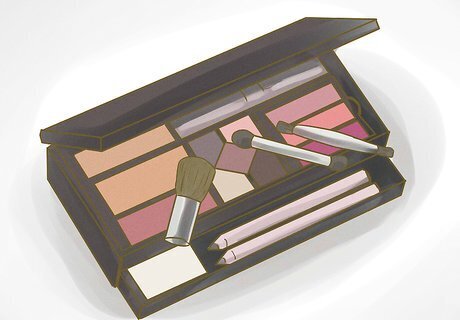
Come up with a product based on your research. Work with your lab or distributor to create a product that matches the brand you want to create. Tell them the kinds of ingredients you prefer to use, the type of makeup you're wanting to create, and the focus of your brand to help them better understand your needs.
Setting up Your Business

Get help from professionals and other business people. When you're first starting out, there's a lot you don't know about starting a company. Ask for help from your friends and family, and when you can, pay for professional help. Pick people to join you who are strong in areas you're not. For instance, if you're good at the creative side, find someone who's good at business. You can even set up the company with them, giving them a stake in the outcome.

Register your business with the government. Choose your name, and then set up either an LLC or a sole proprietorship with your state. You'll need to fill out some basic documents and pay a fee, typically less than $200 USD, and you'll get a tax ID for your business. Your name will need to be different from other businesses registered with the state. However, you can have a "boring" company name, while still having a fun brand name that doesn't have to be registered with the state. If you need help with this part, you can get a business lawyer to help you set it up. A sole proprietorship is easier to set up, but a LLC provides more protection. If something goes wrong with your LLC, the blame falls on your company, and you won't be personally liable for it. In a sole proprietorship, the blame falls on you personally.
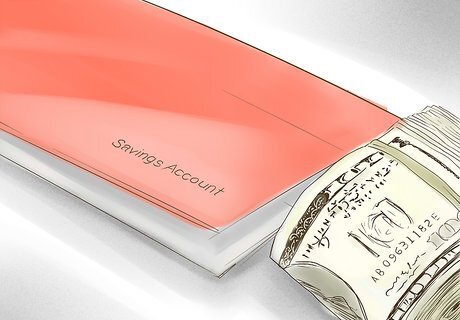
Save money for your first products. It costs money to buy the products for your line, so you need to start saving money right away. How much you'll need depends on the lab or distributor you go with, as each one will have a different minimum order. Typically, though, you'll need at least several thousand dollars to get started. It will be cheaper to work with a distributor at first than a lab. That's because with a lab, you'll have to pay for a whole batch, while with a distributor, you can split batches with other companies.

Apply for a loan or seek out investors for extra cash. If you're afraid you won't be able to save the cash, you do have other options. You can try getting investors for your business or even get a small business loan. Check with your bank to see if they offer business loans. You can often apply online. Ask your friends and family if they'd be willing to invest in your business. Make sure to draw up an official contract with a repayment schedule in place.

Create or have someone design a logo for your brand. A logo makes your brand instantly identifiable. Some logos just use stylized text, while others add in symbols to help people recognize it. Your logo should match your brand. If you want a fun and playful cosmetic line, your logo should be fun and playful with bright colors and lively font. If you want a sophisticated line, your logo should be sleek and sophisticated.
Establishing Your First Products
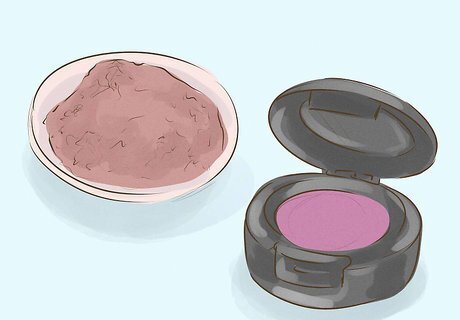
Start with a simple product, like eyeshadow. Work with your lab or distributor to decide on ingredients and colors you want in your line. Also, discuss the qualities you want the makeup to have, such as applying very smoothly or being very pigmented. Eyeshadow is cheaper than other products. Plus, it's the simplest formula-wise. Therefore, it's a good place to start your line. You can build up to other products over time

Brainstorm ideas for color names with a group of people. Your color names will draw people in, so you want them to be fun and reflect your brand. Get your friends together, and brainstorm ideas for your colors. Throw ideas back and forth to see what sticks. It can help to have them try on the product. Write down ideas when they come to you. You can match them up with a color later.

Test your product on yourself and your friends. Your product should have already gone through safety tests, but now you need to see if they're working like you want them to. Try them on yourself, and hand them out to people you know. Give them a feedback card and ask for honest feedback. Don't just try them on. Use them in situations you know other people would. For instance, keep one in your purse or in your car to see how it reacts to heat, light, and so on.

Choose shipping packaging that fits your brand. You don't have to spend tons of money on packaging. However, a few niceties can go along way. For instance, adding colorful tissue paper or a small cloth bag can make your product feel more special to your customers.
Getting Your Product out into the World

Design a marketing plan. A marketing plan will include prices for your product, as well as how you will get your product to your customers. It also includes your costs, so you know what you need to charge. If you're not sure how to create a marketing plan, consider hiring a freelance marketing expert to help you develop one. Analyze the current market to determine your competitors and what sets you apart. Look at prices and makeup type to figure out who you are directly competitive with, and then price your products similarly. Lay out what strategies you'll use to get your product to your customers, and how you will work towards implementing those strategies step-by-step.

Create a website online to sell your products. A website is a great way to sell your products. You can use a free website design tool, though if you don't feel like you have the skills, you can pay someone to do it for you. Make listings for your individual products with good photos in good lighting. Include detailed descriptions of your items, and make sure to have a list of ingredients so people know what you're using!

Print up business cards with your logo. You can design a basic one yourself, or pay someone to design a business card for you. Make sure the logo fits the image you want to portray to your customer. Use a local printer, or find a good deal online to get your cards printed. Include your name, your business name, your email, and your website address on your card at the very least.

Use social media to create and maintain a customer base. If you already have a following on social media, that's great. You can create videos, posts, and pictures showing off your products and what they can do. If you don't have a following, now is the time to start building one! Start by inviting your friends to follow your business page on places like Facebook and YouTube. Then, start posting content relevant to your business, such as makeup tutorials. Keep in mind, most people won't stay around for videos and posts that only sell your products. Make sure you include other fun stuff, such as giveaways and tutorials, to keep people interested.
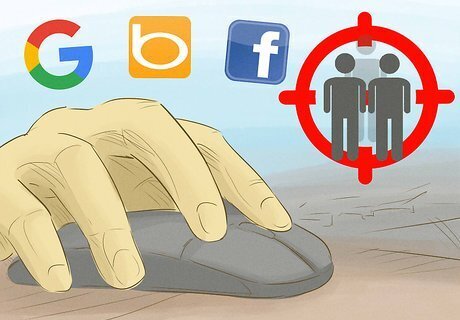
Run advertisements on social media and search engines to gain customers. Run an ad presenting your brand to the world. You can use a video or a static ad to get customers interested. Make sure the advertisement fits your brand. For instance, create a sophisticated video for a more sophisticated brand or a fun and quirky one if you are wanting to draw a younger crowd. The great thing about ads on places like Facebook and Google is you control how much you spend. Set the amount you want to spend each month, and the company will give you a certain number of views, charging per view. When you run out of money, the company stops running your ad. Running ads can help bring in people outside your group of friends who may want to know about your product. These systems allow for very specific targeting, so think about your audience. You may want to target young moms in their 20s, for instance, or 30-somethings who like an alternative look.
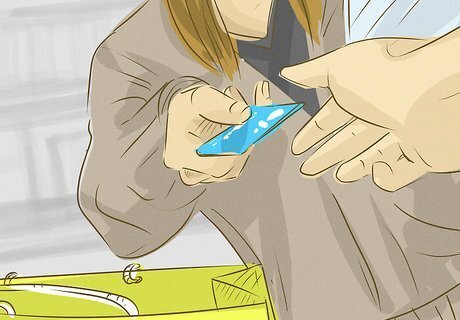
Give products and samples out for free, to increase exposure. Everyone loves getting something for free, and if they love your product, they'll come back! Give samples out at shows, and contact influencers on YouTube and other social media. Most of them love samples and would be happy to review your products. Look for influencers who are in the makeup scene already. Then, use your social media account to send them a private message about your products.

Set up a booth at local fairs and pop-up shops. To build a local clientele, you need to reach customers. Start small by vending at local craft fairs, county fairs, and so on. You can also try buying space at nearby pop-up shops. These places are a great way to meet people, hand out samples, and build up a customer base. Run promotions at these events, such as a free sample with any purchase. Have products customers can try on while there, too.


















Comments
0 comment